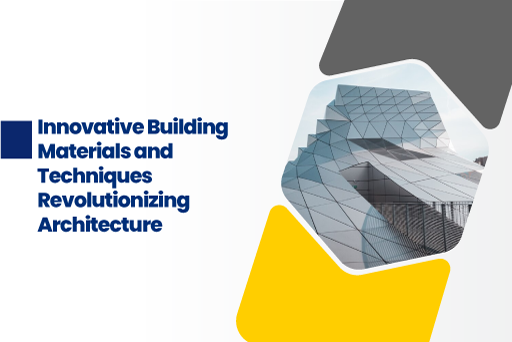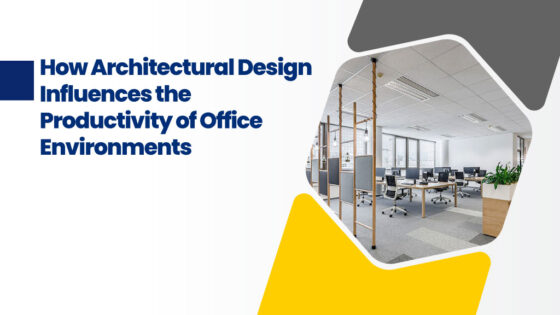The Construction industry continuously evolved with technological advancements making the future promising. Today robotics arms, automation, sustainable materials and smart systems are some of the emerging technologies where you can see the shift in construction practices. The construction systems implement various technologies which support from prefabrication to developing the building projects. However, it follows various processes, and concepts to convert building construction designs. The architecture colleges in Coimbatore follow today’s advancement of technologies which makes quick and focus on shifting the architectural concepts and methodologies. This article gives a glimpse into the building materials techniques and innovative revolutions in the architecture field.
Six Innovative Building Materials and Mechanisms:
1. Self-healing concrete: As the term says, the material has the quality to weaken the cracks. It means whenever a crack forms, air fills in and it absorbs the starch where it creates a bond filling up the cracks. It forms calcium carbonate to conceal the cracks. There are various self-healing concrete, some are under research. However, these innovative materials save maintenance, cost and time.
2. Ceramic bricks: This is a four-layered brick sandwich containing a base layer, fabric layer, hydrogel and top layer. The hydrogel absorbs the water when the temperature rises, the water will evaporate. It generates a cooling effect in the interiors and reduces the temperature up to 6 degrees Celsius. This innovative material acts as an artificial air conditioner. This can be great for buildings where fluctuations of climate change are seen.
3. Cabkoma: Have you heard this before? The cabkoma is an innovative material developed in Japan to strengthen buildings against seismic activity. It is a lightweight material where it can be easily carried. These rods developed in such a way as greater durability, dimensional change with temperature and strong tensile strength against corrosion. Building vibrations are avoided by transferring earthquake forces directly to the ground using an interlocking webbing system.
4. Cross-laminated timber: The substance that can be produced safely without consuming fossil fuels. It is made up of wood and can be used for buildings of different sizes from modest to skyscrapers. If constructed properly, these panels can be completely sealed in air, preventing the fire from spreading to other areas of the building. This cross-laminated timber can be the future of concrete because it combines sustainability, strength and durability.
5. Power-generating glass: Terraces and rooftops can either be transformed into massive utility structures or left alone. However, when they are covered with big solar energy panels, there is essentially no room for other uses. Solar glass differs from regular glass panels in that it has a transparent solar coating that selectively collects and transforms UV and near-infrared light into electricity while only allowing visible light to pass through the structure.
6. Plastic bricks: An engineer in Kenya, the method for turning waste plastic into brick blocks. Sand and consumer plastic trash are combined, heated to extremely high temperatures and crushed into various bricks. Examples of plastic waste include shampoo and milk bottles, buckets, ropes, and bags. It is a lightweight substance that costs 30% less than standard bricks. Plastic bricks can be used for a variety of construction tasks, including constructing walls and paving driveways.
Benefits of modern construction techniques:
1. These modern construction techniques are eco-friendly when compared to traditional construction methods. Manufacturing, assembly and installation of traditional approaches lead to pollutants whereas incorporating modern construction generates lower emissions. The pros of this technique are reducing the carbon footprints.
2. Modern building methods make use of energy-efficient materials, requiring less energy to heat or cool interior spaces. It provides sustainable energy options that integrate into all construction projects as energy costs are increased globally.
3. This approach has less risk because of a pre-planned approach using advanced technology and software. The risk of injuries or falls significantly decreases and the risk of moving construction equipment is sorted with advanced operations and automation.
4. The delays or constant rise of issues are sorted with modern architectural techniques. Thus, you can find this approach a high-quality construction, consistent and organized which is better than the traditional building approach.
Conclusion:
The development of incredible new materials like these, together with cutting-edge architectural ideas and concepts that put a focus on a more environmentally friendly, more secure, and more sustainable future for the industry, continues to drive advancements in the construction industry. Architects need to understand the concepts of innovative materials while designing as the construction also includes these interior designs and building materials as one of the factors. The best architecture colleges in South India need to get the right awareness and space to learn and research construction materials. With the creation of innovative building materials, the construction industry continues to evolve.






